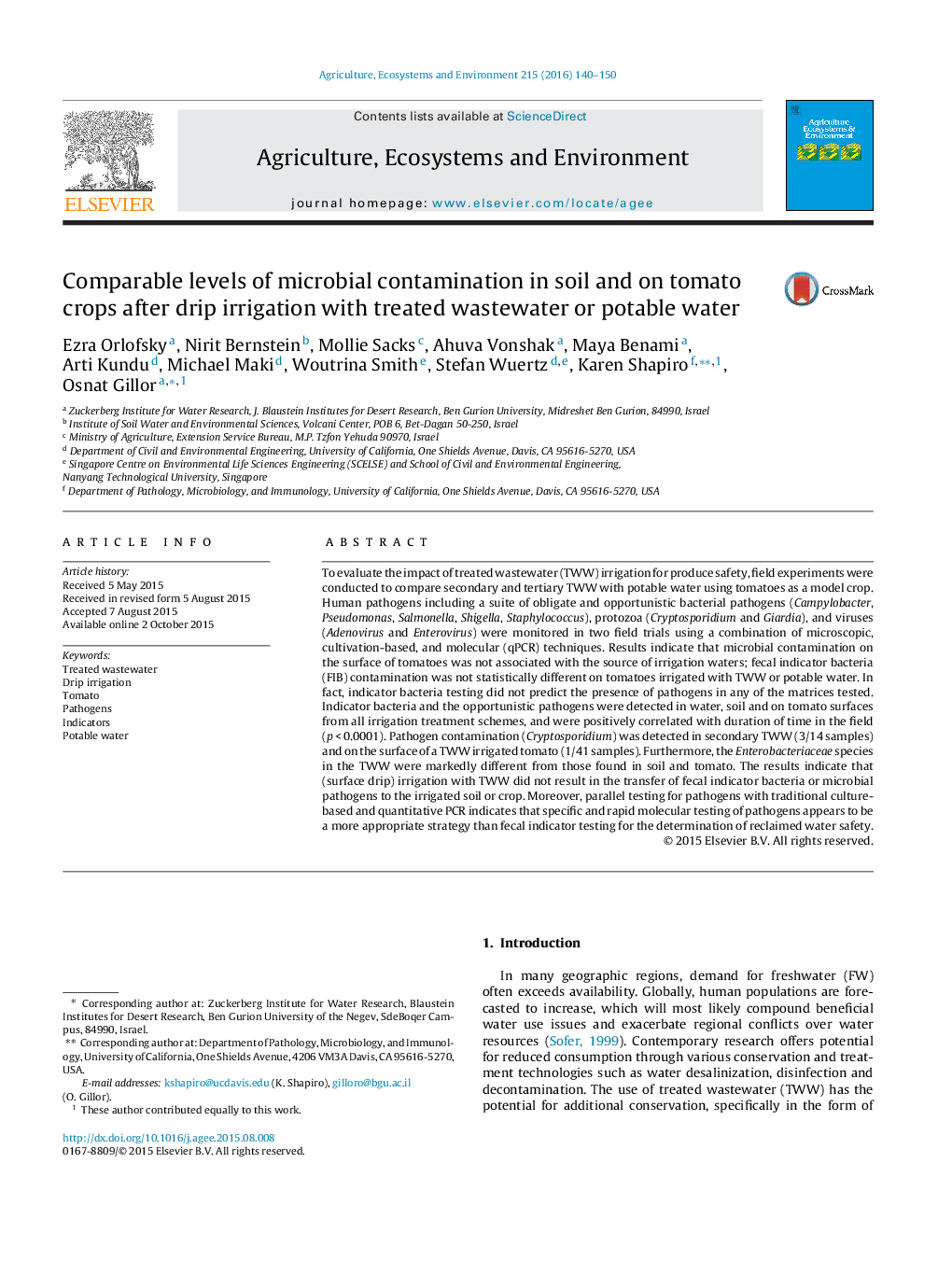| Article ID | Journal | Published Year | Pages | File Type |
|---|---|---|---|---|
| 2413697 | Agriculture, Ecosystems & Environment | 2016 | 11 Pages |
•Tomato crops were irrigated with treated wastewater.•Indicator bacteria and microbial pathogens including bacteria, protozoa and viruses were monitored for two growing seasons.•Methods of quantification and the fecal indicator paradigm were evaluated.•Microbial transfer to the soil and crop from the irrigation treated wastewater did not occur.
To evaluate the impact of treated wastewater (TWW) irrigation for produce safety, field experiments were conducted to compare secondary and tertiary TWW with potable water using tomatoes as a model crop. Human pathogens including a suite of obligate and opportunistic bacterial pathogens (Campylobacter, Pseudomonas, Salmonella, Shigella, Staphylococcus), protozoa (Cryptosporidium and Giardia), and viruses (Adenovirus and Enterovirus) were monitored in two field trials using a combination of microscopic, cultivation-based, and molecular (qPCR) techniques. Results indicate that microbial contamination on the surface of tomatoes was not associated with the source of irrigation waters; fecal indicator bacteria (FIB) contamination was not statistically different on tomatoes irrigated with TWW or potable water. In fact, indicator bacteria testing did not predict the presence of pathogens in any of the matrices tested. Indicator bacteria and the opportunistic pathogens were detected in water, soil and on tomato surfaces from all irrigation treatment schemes, and were positively correlated with duration of time in the field (p < 0.0001). Pathogen contamination (Cryptosporidium) was detected in secondary TWW (3/14 samples) and on the surface of a TWW irrigated tomato (1/41 samples). Furthermore, the Enterobacteriaceae species in the TWW were markedly different from those found in soil and tomato. The results indicate that (surface drip) irrigation with TWW did not result in the transfer of fecal indicator bacteria or microbial pathogens to the irrigated soil or crop. Moreover, parallel testing for pathogens with traditional culture-based and quantitative PCR indicates that specific and rapid molecular testing of pathogens appears to be a more appropriate strategy than fecal indicator testing for the determination of reclaimed water safety.
Graphical abstractFigure optionsDownload full-size imageDownload as PowerPoint slide
